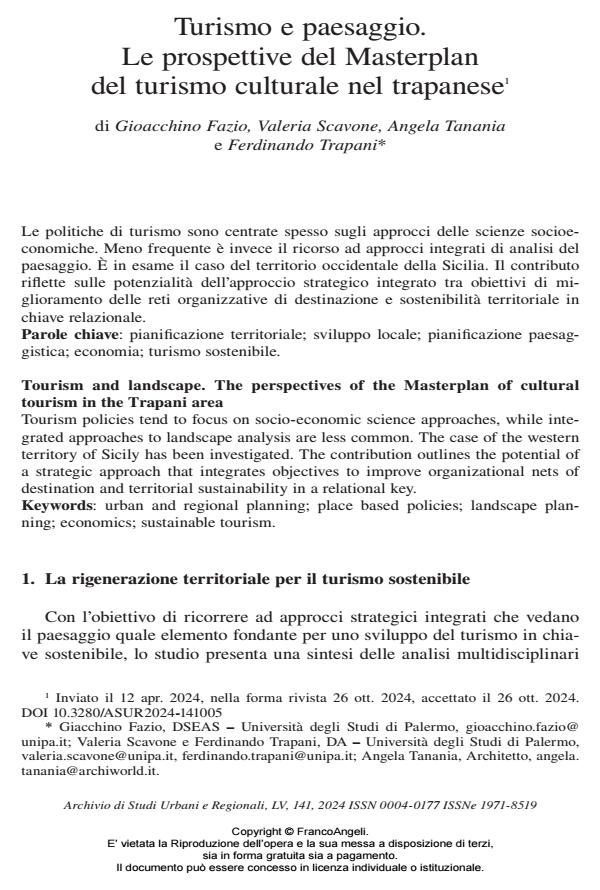Tourism and landscape. The perspectives of the Masterplan of cultural tourism in the Trapani area
Journal title ARCHIVIO DI STUDI URBANI E REGIONALI
Author/s Gioacchino Fazio, Valeria Scavone, Angela Tanania, Ferdinando Trapani
Publishing Year 2025 Issue 2024/141
Language Italian Pages 24 P. 83-106 File size 390 KB
DOI 10.3280/ASUR2024-141005
DOI is like a bar code for intellectual property: to have more infomation
click here
Below, you can see the article first page
If you want to buy this article in PDF format, you can do it, following the instructions to buy download credits

FrancoAngeli is member of Publishers International Linking Association, Inc (PILA), a not-for-profit association which run the CrossRef service enabling links to and from online scholarly content.
Tourism policies tend to focus on socio-economic science approaches, while integrated approaches to landscape analysis are less common. The case of the western territory of Sicily has been investigated. The contribution outlines the potential of a strategic approach that integrates objectives to improve organizational nets of destination and territorial sustainability in a relational key.
Keywords: urban and regional planning; place based policies; landscape planning; economics; sustainable tourism.
Gioacchino Fazio, Valeria Scavone, Angela Tanania, Ferdinando Trapani, Turismo e paesaggio. Le prospettive del Masterplan del turismo culturale nel trapanese1 in "ARCHIVIO DI STUDI URBANI E REGIONALI" 141/2024, pp 83-106, DOI: 10.3280/ASUR2024-141005